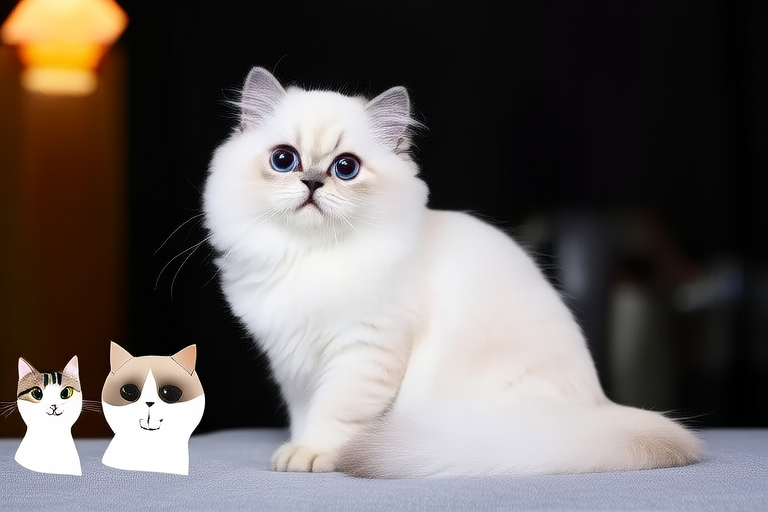Persian Cats vs. Other Breeds: What Makes Them Unique?
Welcome to a delightful exploration of one of the most iconic cat breeds, the Persian. In this article, we’ll dive into what makes Persian cats special by comparing them to other popular breeds. We’ll discuss their unique physical appearance, temperament, grooming needs, health considerations, and historical background. By the end, you’ll have a better understanding of why Persians might be the perfect fit for your home.
The Majestic Appearance of Persian Cats
One of the first things that catch your eye about Persian cats is their striking appearance. Known for their long, flowing coats and round faces, they are often described as elegant and regal. Their eyes are large, expressive, and come in various colors, from deep blues to vibrant greens. The breed’s signature feature is its short nose, which gives it a sweet, innocent look.
Compared to the sleek and athletic build of the Siamese, which has a slender body and a wedge-shaped head, Persians have a more compact and stocky frame. Unlike the Ragdoll’s semi-long coat that clings closely to its body, Persians boast a thick, luxurious coat that requires regular brushing. The Maine Coon, with its shaggy, water-resistant fur and long tail, also stands out in terms of coat texture and length, but Persians take the crown when it comes to sheer volume.
Temperament and Personality Traits
Persians are known for their calm and gentle demeanor. They are typically content to spend their days lounging around, often choosing to find cozy spots to nap or curl up beside their owners. This laid-back nature makes them excellent companions for those seeking a quiet, peaceful atmosphere at home.
In contrast, Siamese cats are vocal and very active, often demanding attention and interaction. Ragdolls, on the other hand, are famous for their docile and affectionate nature, becoming like limp rag dolls when picked up. While the Maine Coon can be equally affectionate, it is also more playful and adventurous, often engaging in games and exploring its surroundings. Persians, however, prefer a more relaxed lifestyle, making them ideal for homes where peace and tranquility are cherished.
Grooming Needs
Due to their long, dense coats, Persian cats require significant grooming to maintain their luxurious appearance. Daily brushing is essential to prevent matting and tangling, and regular bathing is necessary to keep their fur clean and shiny. Their facial folds also need frequent cleaning to avoid infections.
Siamese cats, with their short, fine coats, are relatively low maintenance in comparison. They only require occasional brushing to remove loose hair. Ragdolls, despite having semi-long hair, are easier to groom than Persians, needing less frequent baths and brushing. The Maine Coon, with its weather-resistant coat, also requires less intensive grooming than Persians, though regular brushing is still important to manage shedding.
Health Considerations
Persians are prone to certain health issues due to their genetic makeup. Common problems include respiratory issues caused by their flattened faces, dental problems, and urinary tract diseases. Regular vet check-ups and proper care can help mitigate these risks.
Siamese cats are generally healthy, though they may suffer from heart conditions and dental issues. Ragdolls are susceptible to hypertrophic cardiomyopathy, a type of heart disease. Maine Coons can develop hip dysplasia and cardiomyopathy. While all breeds face health challenges, understanding and addressing these specific concerns can ensure a long, happy life for your cat.
Historical Background
The history of Persian cats dates back centuries, with evidence suggesting they originated in ancient Persia (modern-day Iran). They were first introduced to Europe in the 17th century and quickly became popular among nobility. Over time, selective breeding has refined their appearance, enhancing their elegance and beauty.
Siamese cats have a rich history, originating in Thailand (formerly Siam) and brought to Britain in the 19th century. They were initially associated with royalty and were highly prized. Ragdolls have a much shorter history, developed in the 1960s by Ann Baker. Maine Coons, on the other hand, have been part of American folklore since the early settlers, with tales of them being the offspring of domestic cats and raccoons.
Living with a Persian Cat
If you’re considering adopting a Persian cat, it’s important to understand the commitment involved. Their grooming needs mean they require daily attention, and their health issues necessitate regular veterinary care. However, their calm and loving nature makes them rewarding companions. Providing a comfortable, safe environment with plenty of soft bedding and cozy spots will make your Persian feel right at home.
When compared to other breeds, Persians may not be the best choice for households with young children or high-energy environments. Their gentle disposition and preference for quiet make them better suited for calmer homes. If you’re looking for a cat that will happily curl up beside you and provide companionship without too much fuss, a Persian could be an excellent choice.
Conclusion
Persian cats are truly unique in the world of feline breeds, offering a blend of elegance, grace, and companionship. While they require more attention in terms of grooming and health care, their serene nature and striking appearance make them beloved pets. Whether you’re a seasoned cat owner or considering adding a cat to your family for the first time, taking the time to understand what makes Persians special can help you decide if they’re the right fit for you.
